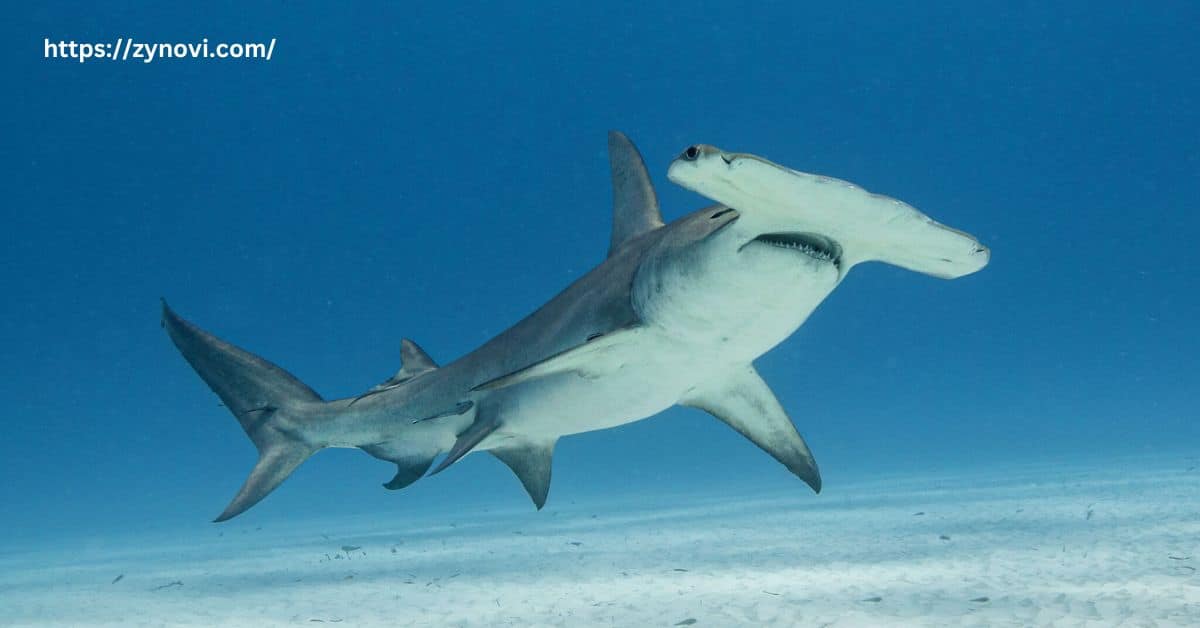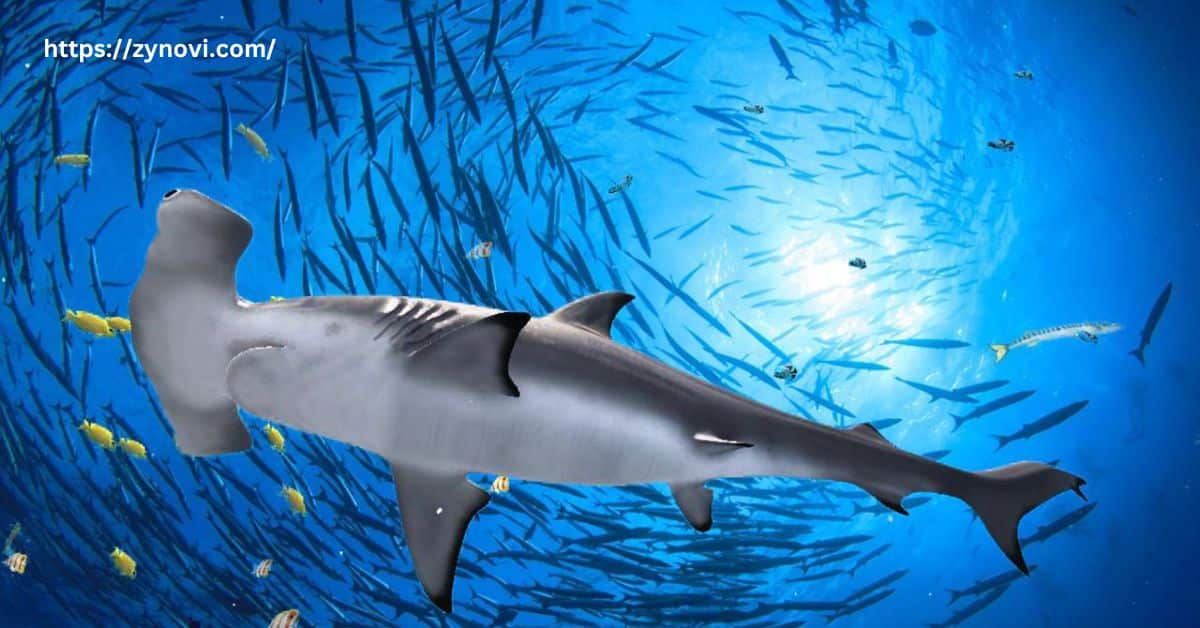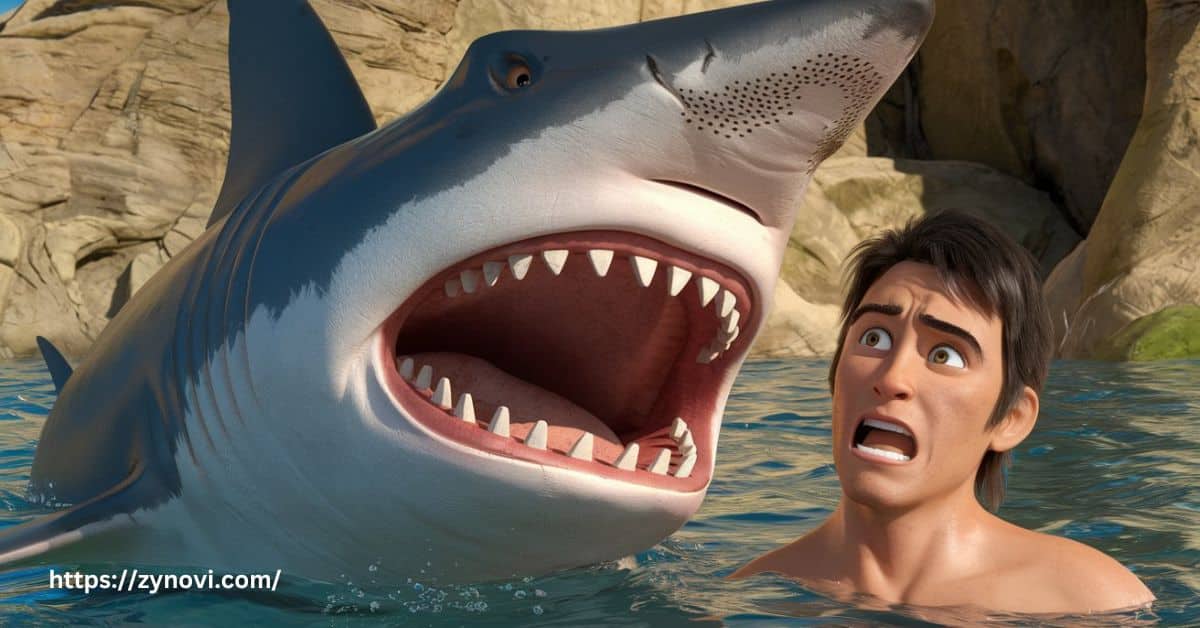Do Hammerhead Sharks Attack Humans? No, hammerhead sharks rarely attack humans and are generally non-aggressive toward people.
If you’ve ever wondered whether these fascinating creatures pose a threat to humans, you’re not alone. With their distinct, hammer-shaped heads and mysterious behavior, hammerhead sharks have long been the subject of myths and fears. But how much of this is actually true?
In this article, we’ll jump deep into the behavior of hammerhead sharks and explore whether these unique ocean predators are as dangerous as they seem. Keep reading, and you’ll discover surprising insights into hammerhead shark attacks, their natural instincts, and tips to safely coexist with these incredible marine animals.
Understanding Hammerhead Sharks: Nature’s Unique Predators
What Are Hammerhead Sharks?
Hammerhead sharks belong to the family Sphyrnidae and are best known for their cephalofoil, or hammer-shaped head. This adaptation gives them an evolutionary advantage, aiding in prey detection and enhanced maneuverability.
They inhabit warm, tropical waters worldwide and are a vital part of marine ecosystems as apex predators.
Species of Hammerhead Sharks
There are nine species of hammerhead sharks, but the most notable include:
| Species | Scientific Name | Size Range | Key Features |
|---|---|---|---|
| Great Hammerhead | Sphyrna mokarran | Up to 20 feet | Largest species, solitary hunter, found in deep water |
| Scalloped Hammerhead | Sphyrna lewini | 6-14 feet | Schooling behavior, ridges on cephalofoil, prevalent in warm water |
| Smooth Hammerhead | Sphyrna zygaena | 8-11 feet | Lacks ridges on the cephalofoil, found in temperate waters |
| Bonnethead Shark | Sphyrna tiburo | 2-4 feet | Smallest species, omnivorous diet |
These sharks are widely distributed and can be found in coastal waters, continental shelves, and even deep-sea regions depending on the species.
Unique Features and Survival Adaptations
Hammerhead sharks are uniquely adapted to thrive in their marine environments. Key features include:
- Hammer-shaped head (cephalofoil): Enhances 360-degree vision and improves maneuverability during hunting.
- Electroreceptors (Ampullae of Lorenzini): Detects prey’s electrical signals, even when buried in sand.
- Streamlined body: Reduces water resistance, enabling swift and agile movements.
- Powerful tails: Provide bursts of speed for catching fast-moving prey.
- Large dorsal fin: Aids in balance and stability during swimming.
- Specialized teeth: Perfect for gripping and slicing prey such as stingrays and fish.
These adaptations make hammerhead sharks formidable predators in the ocean.
Do Hammerhead Sharks Attack Humans? Myth vs. Reality

Historical Records of Hammerhead Shark Attacks
Do hammerhead sharks bite humans? Hammerhead sharks have an impressive safety record when it comes to human interactions:
The International Shark Attack File (ISAF) reports fewer than 20 confirmed hammerhead shark attacks worldwide, with no fatalities ever documented. These incidents are rare and often involve curiosity-driven encounters rather than outright aggression.
Compared to predatory species like great white sharks, tiger sharks, or bull sharks, hammerheads are regarded as non-aggressive and shy around humans, further debunking the myth of them being a significant threat.
Behavior Around Humans
Hammerheads attack humans? Hammerhead sharks exhibit a curiosity-driven nature, often approaching humans out of interest rather than aggression. These encounters are typically brief and non-threatening, as hammerheads are more focused on hunting prey like stingrays, fish, and cephalopods.
Despite their size and unique appearance, they are shy and reclusive by nature, often avoiding direct interaction.
Divers and marine researchers frequently report calm observations of hammerheads, highlighting their non-aggressive behavior and preference for maintaining distance from humans in most scenarios.
Why Hammerhead Sharks Are Labeled Non-Aggressive

Behavioral Traits and Feeding Habits
Hammerhead sharks are known for their shy and reclusive behavior, often steering clear of larger animals, including humans.
Their diet primarily consists of stingrays, small fish, and cephalopods, which they skillfully hunt using their ampullae of Lorenzini specialized electroreceptors that detect the faint electrical signals emitted by prey, even when buried in sand.
This unique hunting adaptation sets them apart from other shark species. Unlike more aggressive sharks, hammerheads prefer to focus on smaller prey and display non-predatory behavior toward humans, further solidifying their reputation as a non-aggressive species.
Comparing Hammerheads with Other Shark Species
Hammerhead sharks are significantly less aggressive compared to these notorious shark species:
- Great White Sharks: These apex predators are known for their powerful hunting strategies and opportunistic feeding, often targeting seals and large fish.
- Tiger Sharks: Dubbed “garbage eaters,” they consume a wide variety of prey, including inedible objects, and are responsible for many human-shark encounters.
- Bull Sharks: Highly territorial and adaptable, they frequently swim in shallow waters, making them one of the leading species involved in unprovoked shark attacks.
Insights from Marine Biology Research
Research in the Bahamas, a renowned hub for shark ecotourism, highlights hammerhead sharks as one of the most approachable species for divers.
These studies reveal that hammerheads exhibit curiosity-driven behavior but maintain a preference for keeping their distance from humans. Marine biologists note that interactions are typically non-aggressive unless the sharks are provoked or enticed by food sources.
This calm demeanor underscores their reputation as a non-threatening species, making them a favorite among researchers and underwater enthusiasts alike.
How to Stay Safe Around Hammerhead Sharks

Do hammerhead sharks eat people? Staying safe around hammerhead sharks involves understanding their behavior and following key ocean safety guidelines. By respecting their natural habitat and avoiding actions that may provoke curiosity or aggression, you can reduce the risk of encounters.
Best Practices for Avoiding Risk
When swimming or diving in hammerhead habitats, follow these ocean safety tips:
- Stay in groups: Hammerhead sharks are less likely to approach large groups of people, as they often avoid potential threats and prefer solitary encounters.
- Avoid dawn and dusk: These are peak feeding times for many sharks, including hammerheads. Visibility is lower, making interactions more likely during these hours.
- Avoid shiny jewelry: The reflection of light off jewelry can resemble fish scales, attracting sharks’ attention and potentially provoking curiosity-driven behavior.
- Avoid open wounds: Hammerheads, like other sharks, can detect blood from miles away, and open wounds may draw them closer in search of a meal.
- Avoid fishing areas: Fishing areas are often bait-rich environments, increasing shark activity. Hammerheads may be more likely to approach these zones due to the abundance of potential food.
What to Do During an Encounter
Do hammerheads attack? If you encounter a hammerhead shark attack then:
- Remain calm: Keep your movements slow and deliberate. Sudden actions may trigger the shark’s curiosity or cause it to feel threatened.
- Maintain eye contact: Sharks tend to prefer surprise attacks, so keeping eye contact ensures they know you are aware of their presence, which may reduce the chance of aggression.
- Exit slowly: If you need to move away, do so slowly and deliberately, ensuring you don’t turn your back, as this can be perceived as a vulnerable position.
- Use a barrier: If you’re diving, keep your camera or dive equipment between you and the shark to create a physical barrier, helping maintain a safe distance.
Conservation and the Role of Hammerheads in Marine Ecosystems
Threats Facing Hammerhead Sharks
Hammerhead populations are declining due to:
Overfishing: Hammerhead sharks are heavily targeted for their fins, which are highly valued in the shark fin trade, leading to a dramatic decline in their numbers.
Habitat loss: Coastal development and marine pollution disrupt their natural habitats, making it harder for hammerheads to thrive and reproduce.
Climate change: Rising ocean temperatures and shifting currents alter their migration patterns, impacting their ability to find prey and suitable breeding grounds.
Why Protecting Hammerheads Matters
Protecting hammerhead sharks is essential because they play a crucial role as apex predators in maintaining the balance of marine ecosystems. By controlling populations of smaller fish and prey, they help ensure healthy biodiversity in the oceans.
A decline in hammerhead populations could lead to an overabundance of certain species, causing disruptions in the food chain and harming the ecosystem’s overall health. Preserving hammerheads safeguards ocean stability for future generations.
How You Can Help
- Support organizations like the Shark Conservation Fund.
- Avoid purchasing shark products.
- Promote sustainable seafood choices.
- Participate in ethical shark ecotourism to support conservation efforts.
FAQs
Are hammerhead sharks dangerous to humans?
No, hammerhead sharks are generally non-aggressive and avoid human interactions unless provoked.
Are hammerheads aggressive to humans?
No, hammerhead sharks are generally non-aggressive and prefer to avoid humans.
Will a hammerhead attack you?
Hammerhead sharks rarely attack humans, and attacks are extremely uncommon.
Is swimming with hammerheads safe?
Yes, swimming with hammerhead sharks is generally safe as long as you follow proper safety guidelines and respect their space.
What to do if you see a hammerhead shark?
Stay calm, maintain eye contact, and slowly back away without turning your back on the shark.
Conclusion: Do Hammerhead Attack Humans?
Despite their unique, intimidating appearance, hammerhead sharks are largely non-aggressive and show little interest in humans. Their natural behavior is typically shy and solitary, with humans rarely posing a threat to them.
Hammerheads play a crucial role in maintaining the balance of marine ecosystems, preying on smaller marine animals, and keeping populations in check. By respecting their habitats and adhering to safety guidelines, we can reduce the risk of interactions and coexist with these fascinating creatures.
This approach not only ensures our safety but also supports the conservation efforts needed to protect hammerhead sharks for future generations.










